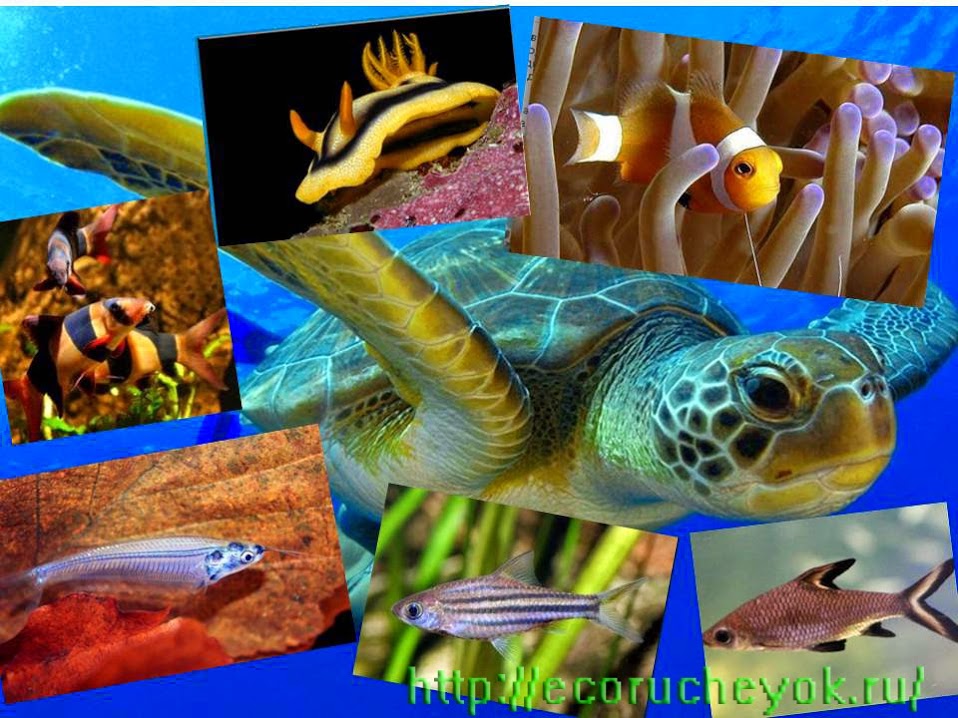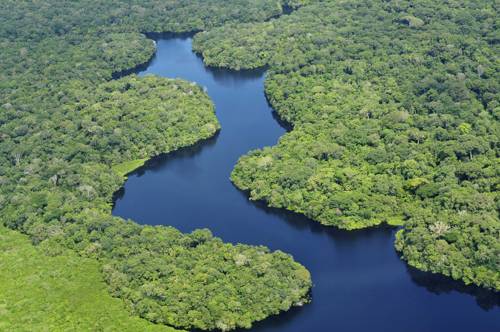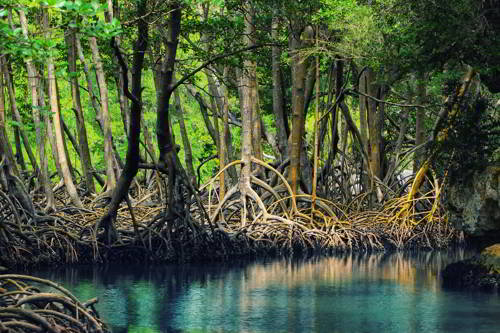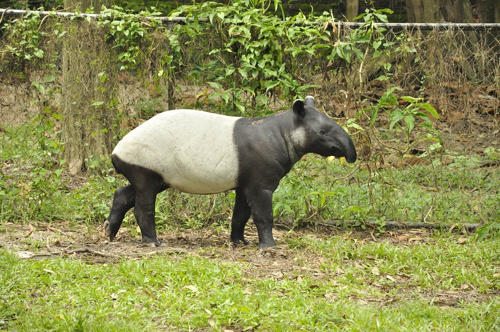Today is the second topic of the project "Paper aquarium", and we will learn about the conditions for the life of living beings created by nature at the equator. Naturally, conditions are formed by the climate. What are the features of the equatorial climate? It turns out that the equator is not the hottest place on Earth. The hottest places are located at a fairly significant distance from the equator to the north and south of it.
Repetition of glaciations is the originality of the Pleistocene, but there were also older glaciations, especially in the Precambrian and Cambrian. - Grain: short disturbance, often violent, most often acceleration and wind change. - Hail: deposition of ice globules with a diameter of 5 to 50 mm. - Sludge: sedimentation from frozen droplets whose granules are less than 5 mm. - Guinea: warm climate with constant rainfall, often in the vicinity of the equator; sometimes called, but inappropriately, "equatorial climate".
Expansion: northern coast of the Gulf of Guinea, Congolese Basin, Amazon, New Guinea, Borneo. - Gulf Stream: a large warm North Atlantic stream from the Gulf of Mexico and heading northeast north of Norway and helping to keep the Murmansk port on ice all year round. Hierarchy: In tropical countries, wintering is called the rainy season, corresponding to the astronomical summer. - Air humidity: the amount of water vapor contained in the air. Absolute humidity is expressed in grams of water vapor contained in one cubic meter of air.
Main characteristics of the equatorial climate
Watch carefully the video tutorial about the climate features at the equator and its surroundings.
Equatorial climate, video:
So, you can talk about the equatorial climate using just three words: hot, humid, always.
Relative humidity is the percentage between the actual air content of water vapor and the maximum air content under the same temperature and pressure conditions. Hydrometeorite: an atmospheric phenomenon composed of water particles; water: rain, snow, hail, fog, spray, dew, etc. Antarctica and Greenland have two current ice caps. - Interglacials: the phase of the disappearance of a glacier or retreat due to climate warming, the time interval between two glaciations, designated either by the name of glaciation or by levels of moraine and loess, which indicate an active and prolonged pedogenesis, thus a retreat of the glacier.
- Indeed, here the air temperature remains almost unchanged throughout the year. At sea level, it is kept within 24-28 degrees Celsius.
- Precipitation is very heavy. There is tropical rain almost every day.
- There are no strong winds at the equator strong winds- this is a zone of calm.
Therefore, it is almost impossible to divide the year into summer and winter months. And this is the most important feature equatorial climate.
Intertropic: defines the space between the North and South Icelandic or Icelandic tropics: a type of hyperoceanic cold climate characterized by the frequency of disturbance and precipitation, and a low thermal amplitude. This is the climate of the layer of the troughs of the polar fronts.
It is found mainly on southern islands Kerguelen, Macquarie, etc. Between 40 ° and 50 ° S latitude and in close proximity to the island of the same name in the North Atlantic. Persistent Snow Limit: The limit above which snow cover persists throughout the year.
To somehow feel the conditions of the equatorial climate, namely, to feel the daily tropical rain, play a game. The game is called "tropical rain". Description of the game
Equatorial biodiversity
At the equator, the amount of solar heat and light is almost the same all year round, because the sun's rays are almost always directed directly to the surface of the Earth.
Marin: South or southeast wind in the French Mediterranean. - Air mass: a limited part of the troposphere with pronounced thermal and hygrometric characteristics in relation to neighboring parts, from which it is separated by fracture surfaces called fronts. There are two main types air masses: tropical and polar. Equatorial air is very humid and erratic tropical air, while arctic air is very cold polar air. Air masses are determined by their sea or continental origin, their temperature, and their instability.
To summarize the information received about the equatorial climate, let's take a look at Wikipedia.
Here we read: « Equatorial climate - climate wet forests equatorial belt with weak winds, very small annual temperature fluctuations (24-28 ° C at sea level) and abundant precipitation (from 1.5 thousand to 5 thousand mm per year), falling more or less evenly throughout the year. Observed on either side of the equator between subequatorial belts(maximum about 10-12 degrees on either side of the equator). "
Stagnant air mass or not can degenerate as a result of tropization, continentalization, etc. - Glacial maximum: the strongest expansion of glaciation, can be traced by the outermost moraine ridge or glacial leash, for simplicity, the Pleistocene period, during which the glaciers experienced the greatest development and deposited the outer foothill moraines, characterized by drought summers and relative mild winters. Precipitation, which varies in abundance, is intense and often long, resulting in severe soil erosion and catastrophic flooding, while the Mediterranean climate is relatively diverse, with varying intensity and duration. summer drought and a marked continental gradient from the Atlantic coast of Portugal and Morocco to the eastern Mediterranean; the seasonal distribution of precipitation has two maximums or one winter maximum.
High temperature, an abundance of light and moisture have formed the most ideal conditions for life at the equator for a huge variety of living things that live both on land and in water (in the sea and fresh water bodies).
Biodiversity equatorial forest.

Mediterranean climate west coast Cold weather is characterized by relatively cool and foggy summers, although no actual precipitation is expected to be maximum. winter. - Mistral: strong North wind blows in the Rhone Valley, in Provence, in the provinces of the Spanish Levant. - Monsoon: southwest wind blows in summer in Indian Ocean... The name stratospheric monsoon has been applied to the seasonally inverted zonal flow and is found at altitude. The term pseudomusson was proposed for all alternative winds and streams not related to South-East Asia.
Now is the time to do your homework.
Assignment 2
- Download the contour map with task No. 2 "Equatorial climate zones" to your computer (To do this, right-click on the picture "World map". Then, with the left mouse, once click on the words "Save image as ...". After that, the picture will be saved in the downloads your computer.) and print it.
- Circle and color those areas along the equator where the equatorial climate is observed (if necessary, look again at the part of the lesson that talks about this).

Occlusion: hot air loss on high altitude in cyclonic depression. Ocean: A climate with a low thermal amplitude, such as an island. The propagation of these waves in a moving fluid corresponds to the dynamic necessity of the law of conservation of the horizontal rotation speed; they can be visualized in the atmosphere, for example, with the alternation of cells of high pressure and Low pressure, which bypasses the jet streams of circulation on the westerly wind great height v temperate latitudes, the device of which determines the types of weather.
In the ocean, Rossby waves have a very wide range of spatial scales; they are especially responsible for the meanders observed in the currents of the western edges of the oceans. The grains are often violent as well as tropical tornadoes. Oscillation: climate change the late ice and post-glacial periods, primarily of interest for temperature and affecting the position of the glacier front, as on the ecology of animals and plants; some of them are positive, others are negative. - Southern Oscillation: global redistribution between fields atmospheric pressure over Indonesia, on the one hand, and the southeastern part The Pacific- with another.
Contour map with task number 2 "Equatorial climate zones".
In the next lesson, you will meet with representatives of living creatures inhabiting the equatorial forest and reservoirs located in the equatorial climate zone.
To prepare a video lesson, the following materials were used:
- Brief Geographical Encyclopedia, Volume 4 / Ed. A.A. Grigoriev M.: Soviet encyclopedia - 1964, 448 p. with ill., 10 p. kart
- Atlas. Geography + Contour maps: initial course: 6th grade - M. Design.Information. Cartography: AST: Astrel, 2010.-39, p.: Maps + 16 p. Contact cards
- http://glossary.ru/
- http://ru.wikipedia.org/
Equatorial climatic zone located on both sides of the equator, between the two. The average monthly temperature is from + 24 to + 28 ° C, and the average monthly temperature fluctuation throughout the year varies from ± 2-3 ° C.
When pressures tend to rise over the Southeast Pacific, they tend to decrease compared to Indonesia, and precipitation changes in the opposite direction. The negative phases of the Southern Oscillation, the pressure drop in the anticyclone of the Southeast Pacific Ocean and the weakening of the corresponding trade winds are closely related to the development of the El Niño phenomenon. The monthly Southern Oscillation Index values are determined from the monthly air pressure anomalies in Darwin and Tahiti, respectively.
North Atlantic Oscillation: A regime of climate variability affecting the North Atlantic and the entire bordering region. The negative phase is characterized by less frequent and less disturbed circulation, cold and dry winters in Northern Europe and Central Europe, wetter winters in Mediterranean Europe and tropical cyclones in the form of tropical cyclones. Great violence in the western part Atlantic Ocean and in the northeastern Pacific Ocean. The Saffer-Simpson scale used in America classifies hurricanes for conquest.
Equatorial air is formed from tropical air masses supplied to the equator by the trade winds of the North and Southern hemispheres... The formation of the climate takes place in the area of the equatorial depression with weak winds. The main thermodynamic process accompanying the transformation of air is its humidification.
The equatorial climate zone is characterized by a large supply of unstable energy. It is saturated with moisture, and the conditions of vertical air stratification are favorable or release energy. In this regard, convective clouds are extremely important in areas with equatorial air... Under the influence of the general combination of air circulation and radiation factors, the climate here is hot and very humid with a large amount of precipitation: up to 3000 to 10,000 mm on the windward slopes of the mountains.
Damage caused by this category is limited to shrubbery and unattached dwellings. Damage caused by this category is limited to residential roofs. Boats can be freed from their anchorage. Damage caused by this category consists of the uprooting of trees, windows and doors, and many floods and house demolitions occur near the coast. The damage caused by this category consists of the uprooting of most trees as well as displays.
The land on the shore 3 m above sea level is flooded. Severe erosion occurs on beaches and the damage caused by this category is the uprooting of all trees and the destruction of many houses and most roofs. It is characterized by massive melting glacial ice and soil ice, dead ice and heavy runoff, resulting in massive precipitation mobilization. Icy slopes are prone to collapse of rock walls and massive movements. At the same time, we are witnessing the vegetative conquest of degraded spaces.
Surface water bodies, as a rule, rivers contain abundant amounts of water. The exception is river systems, which are located in other climatic zones. Natural processes in the equatorial parts of the continents are very active.
Equatorial belt countries
The equatorial belt covers several countries in South America: Ecuador, Colombia, Guyana, Venezuela Peru and Brazil; Africa: Liberia, Cote d'Ivoire, Ghana, Benin, Nigeria, Cameroon, Central African Republic, Congo, DRC, Gabon, Equatorial Guinea, Uganda, Kenya, Tanzania, Rwanda, Burundi; Malacca Peninsula, as well as the islands of Southeast Asia ...
Ryder to highlight the features of postglacial riverine sedimentation. Ballantyne extended it to all non-glacial processes on the Earth's surface, to sedimentary, modeled accumulations, morphogenic systems and landscapes directly caused by glaciation-deglaciation. The unifying principle of this new branch of geomorphology is to reduce the availability of glaciogenic sediments depending on time and processes at work. Permafrost: Permafrost. It is characterized by a decrease in summer temperatures and an increase in winter precipitation, which leads, in particular, to the restructuring of the Arctic and Alpine glaciers. a wind transport mechanism that allows fine terrigenous particles to reach high altitudes and cross intercontinental distances.
Natural zones of the equatorial belt
Map of natural zones and climatic zones of the world
In this belt, three terrestrial natural zones are distributed: the zone of humid equatorial forest (South America, Africa, the islands of Southeast Asia), and woodlands (South America), and natural area high-altitude zones (islands of Southeast Asia and South America).
The particles that move in the air in the air are fine, the size of clays and silts of various natures, they are essentially mineral, as well as biological, plant and animal origin and are also enriched by pollution human activities - up to 10% of their total density in the northern hemisphere - and a meteoric micro-flash space origin, big variety shapes and conditions, original surfaces or acquired during transportation. Reflecting solar radiation back into the atmosphere, aerosols are responsible for cooling the Earth's surface.
Equatorial soils
The equatorial climatic zone is dominated by yellow, red-yellow ferrallite (laterite) soils. They are characterized by dead plant matter and rapid mineralization. Also organo-mineral complexes prevail here. These soils are poor chemical compounds and humus (2-3%), but rich in iron hydroxides and aluminum. The vital activity of microorganisms, as well as animals of small size, is extremely high, both in the soil and on its surface. When plowing and plowing land, soil due to high temperatures and drainage very quickly lose their fertile properties.
Air transport is suspended in the atmosphere, and then sediment or precipitation, which participates in precipitation in desert areas and especially to the desert: Central Sahara, Sinai, southern part Morocco, Canary Islands... This wind transport is also in the form of dry mists. Fog can be viewed as light fog with visibility over 1 km. A distinction must be made between dry turbidity and wet turbidity. Dry turbidity with little water vapor is often formed in dry areas during periods of good weather and is a mixture of natural or artificial dust from silts and fine sands that move up from the ground. air vortices in the lower atmosphere.
Equatorial forests

Amazon Basin
Wet equatorial evergreen - forests in which annual quantity precipitation exceeds 2000 mm. The largest sites are located in the basin, B South America; in the Congo Basin, Central America; on the islands of Borneo, Mindanao (Philippines), New Guinea and Indonesia.
The humid fog, which is common in the humid tropics, is due to the rather dense collection of water droplets in the atmosphere. Just a little cooling, so that the droplets grow and form a fog five states were concerned. This bowl of dust was an ecological and human disaster due to prolonged drought and over-exploitation of the land.
Millions of hectares of agricultural land were barren, and hundreds of environmental refugees were forced to flee to California, where landless they wandered to become farmers. Dust affects both the North American Great Plains and the North American Great Plains. Arabia, the Gobi Desert and its outskirts in Mongolia, Taklamakan in northwestern China as the Sahara Desert. Sahelization: Used in the context of geological or human scale dehydration from activities and especially grassland, to define the passage of wooded or scrub savannah or dense dry forest to vegetation gradually opened up.

Mangroves
Distributed along the seas and oceans of the equatorial climatic zone. Mangrove trees have adapted to challenging habitats. During low tide, they are exposed to elevated temperatures and drying out, and then cooled and flooded with water during high tides. Thus, in order to survive in this environment, trees must withstand wide ranges of salinity, temperature and humidity, as well as a number of other natural factors.
Plants and animals of the equatorial belt
The equatorial belt is characterized by a rich flora and fauna. Economic useful plants are: rubber ficus (including hevea), cocoa tree, breadfruit, cottonwood, various types of palms, and trees with valuable timber.

Animals that live in the forests of the equatorial belt have adapted to life in trees. These include: monkeys, lemurs, sloths and some representatives. From terrestrial animals, tapirs, rhinos, bakers and hippos live in the equatorial climatic zone. There are also a huge number of birds, reptiles and insects.




